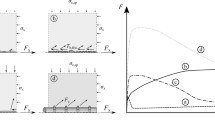Abstract
This paper presents results of experiments, conducted at NIST and elsewhere, to measure compressive strength of concrete at elevated temperature. The paper compares the test data with existing design rules and recommendations to assess their applicability to HSC. Based on the compiled data, the paper proposes new strength-temperature relationship for HSC and discusses the need for standardizing the test procedure for testing concrete at high temperature and for a revision of the current design guides to include new data for properties of concrete at high temperature.
Résumé
Cet article présente les résultats expérimentaux, recueillis au NIST et ailleurs, pour mesurer la résistance à la compression du béton soumis à des températures élevées. Cet exposé compare les données disponibles avec les règles et recommandations existantes pour la conception d’un béton afin de déterminer leur applicabilité pour le béton à haute résistance (HSC). Basé sur les données compilées, cet article propose une nouvelle relation entre la résistance et la température pour le béton à haute résistance, On discute de la nécessité de standardiser la procédure de mesure de la résistance du béton à haute température. On discute aussi de la nécessité de revoir les guides actuels pour y inclure les données récemment disponibles concemant les propriétés du béton à haute tempèrature.
Similar content being viewed by others
References
Abrams, M.S., ‘Compressive strength of concrete at temperatures to 1600F’, ACI SP 25, Temperature and Concrete, (American Concrete Institute, Detroit, Michigan, 1971).
American Concrete Institute, ‘State-of-the-Art Report on High-Strength Concrete’, ACI 363R-92 (1992).
American Concrete Institute, ‘Guide for Determining the Fire Endurance of Concrete Elements’, ACI 216R-89 (1989).
Castillo, C. and Durrani, A.J., ‘Effect of transient high temperature on high-strength concrete’,ACI Materials Journal 87 (1) (Jan–Feb, 1990), 47–53.
Comité Euro-International du béton, ‘Fire Design of Concrete Structures—in accordance with CEB/FIP Model Code 90’,CEB Bulletin d’Information No. 208 (Switzerland, July 1991).
Comité Européen de Normalisation, ‘prENV 1992-1-2: Eurocode 2: Design of Concrete Structures. Part 1–2: Structural Fire Design’, CEN/TC 250/SC 2 (1993).
Comité Européen de Normalisation, ‘Eurocode 4 Design of Composite Steel and Concrete Structures. Part 1–2: General Rules-Structural Fire Design’, CEN ENV (1994).
Concrete Association of Finland, ‘High Strength Concrete Supplementary Rules and Fire Design’, RakMK B4 (1991).
Diederichs, U., Jumppanen, U.-M. and Penttala, V., ‘Material properties of high strength concrete at elevated temperatures’, IABSE 13th Congress, Helsinki (June 1988).
Diederichs, U., Jumppanen, U.-M. and Penttala, V., ‘Behavior of high strength concrete at high temperatures’, Report #92, Helsinki University of Technology (1989).
Diederichs, U., Jumppanen, U.-M. and Schneider, U., ‘High temperature properties and spalling behavior of high strength concrete’, Proceedings of the Fourth Weimar Workshop on High Performance Concrete: Material Properties and Design, Hochschule für Architektur und Bauwesen (HAB) (Weimar, Germany, October 4–5, 1995) 219–236.
Felicetti, R., Gambarova, P.G., Rosati, G.P., Corsi, F. and Giannuzzi, G., ‘Residual mechanical properties of high-strength concretes subjected to high temperature cycles’, Proceedings, 4th International Symposium on Utilization of HS/H (Paris, France, 1996) 579–588.
Furumura, F., Abe, T. and Shinohara, Y., ‘Mechanical properties of high strength concrete at high temperatures’, Proceedings of the Fourth Weimar Workshop on High Performance Concrete: Material Properties and Design, Hochschule für Architektur und Bauwesen (HAB) (Weimar, Germany October 4–5, 1995) 237–254.
Hammer, T.A., ‘High-strength concrete phase 3, Compressive strength and E-modulus at elevated temperatures’, SP6 Fire Resistance, Report 6.1 SINTEF Structures and Concrete (February, 1995).
Hertz, K., ‘Danish investigations on silica fume concretes at elevated temperatures’, Proceedings, ACI 1991 Spring Convention (Boston, MA, March, 1991) 17–21.
Hertz, K., ‘Heat Induced Explosion of Dense Concretes’, Report No. 166, Institute of Building Design, Technical University of Denmark (1984).
Khoury, G. and Algar, S., ‘Mechanical behavior of HPC and UHPC concretes at high temperatures in compression and tensionrs, paper presented at ACI International Conference on State-of-the-Art in High Performance Concrete (Chicago, Illinois, March 1999).
Malhotra, H.L., ‘The effect of temperature on the compressive strength of concrete’,Magazine of Concrete Research 8 (22) (London, 1956), 85–94.
Morita, T., Saito, H. and Kumagai, H., ‘Residual mechanical properties of high strength concrete members exposed to high temperature—Part 1: Test on material properties’, Summaries of Technical Papers of Annual Meeting, Architectural Institute of Japan (Niigata, August, 1992).
Phan, L.T., ‘Fire Performance of High-Strength Concrete: A Report of the State-of-the-Art’, NIS-TIR 5934, Building and Fire Research Laboratory, National Institute of Standards and Technology, (Gaithersburg, Maryland, December 1996).
Phan, L.T. and Carino, N.J., ‘Review of mechanical properties of HSC at elevated temperature’,Journal of Materials in Civil Engineering, American Society of Civil Engineers10 (1) (February, 1998) 58–64.
Phan, L.T. and Carino, N.J., ‘Mechanical Properties of High Strength Concrete at Elevated Temperatures’, NISTIR 6726, Building and Fire Research Laboratory, National Institute of Standards and Technology, (Gaithersburg, Maryland, March 2001).
Schneider, U., ‘Concrete at high temperatures—A general review’,Fire Safety Journal, The Netherlands (1988) 55–68.
Schneider, U., ‘Behavior of concrete at high temperatures’, RILEM-Committee 44-PHT (February, 1983).
Schneider, U., ‘Properties of materials at high temperatures-Concrete’, RILEM-Committee 44-PHT Department of Civil Engineering, University of Kassel (Kassel, June, 1985).
Phan, L.T. and Carino, N.J., ‘Effects of test conditions and mixture proportions on behavior of high-strength concrete exposed to high temperatures’,ACI Materials Journal, American Concrete Institute,99 (1) (January–February, 2002) 54–66.
Phan, L.T., Lawson, J.R. and Davis, F.R., ‘Effects of elevated temperature exposure on heating characteristics, spalling, and residual properties of high performance concrete’,Mater. Struct.,34 (236) (March 2001) 83–91.
Author information
Authors and Affiliations
Additional information
Editorial Note Dr. Long T. Phan is a RILEM Senior Member. He participates in the work of RILEM TC HTC ‘Mechanical concrete properties at high temperature-Modelling and applications’. Dr. Nicholas J. Carino is also a RILEM Senior Member. Both of them work at NIST, a RILEM Titular Member.
Rights and permissions
About this article
Cite this article
Phan, L.T., Carino, N.J. Code provisions for high strength concrete strength-temperature relationship at elevated temperatures. Mat. Struct. 36, 91–98 (2003). https://doi.org/10.1007/BF02479522
Received:
Accepted:
Issue Date:
DOI: https://doi.org/10.1007/BF02479522




